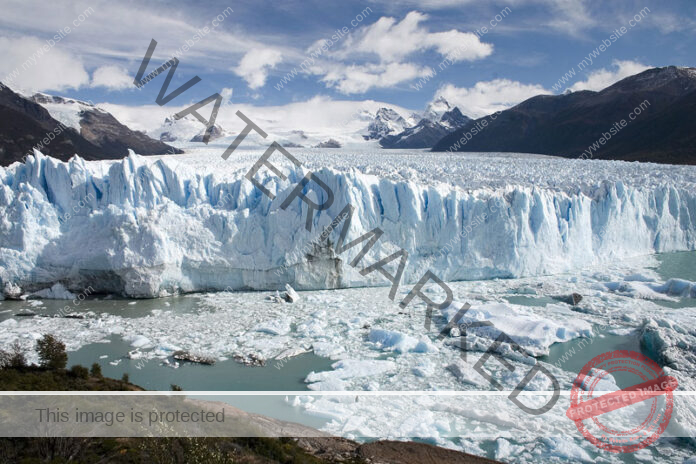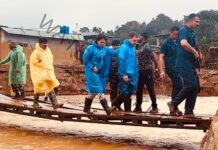In October, 2023 a catastrophic Glacial Lake Outburst Floods (GLOF) event at South Lhonak Lake in Sikkim was witnessed. Similarly, Chamoli Glacial Lake Outburst and Flash Flood were witnessed in 2021 in Uttarakhand.
In the past decade between 2014 and 2024, India witnessed three major GLOF events in the Ganga and Brahmaputra basins: the 2013 Kedarnath tragedy, the 2021 Chamoli disaster, and the 2023 Sikkim GLOF.
With rising temperatures and subsequent glacial melt over the years, the increased risk of GLOFs is threatening life and property in the higher Himalayas.
Rise in frequency of such natural disasters has prompted an immediate technical response, post-event assessments and urgent repair of Early Warning System (EWS) infrastructure at the event site.
As part of disaster response undertaken in case of GLOF events and important steps taken to avoid loss of human lives in re-occurrence of such events in future, the National Disaster Response Force (NDRF) has successfully responded in two major GLOF incidents viz Chamoli Glacial Lake Outburst & Flash Flood, Uttarakhand, 2021 and Sikkim Glacial Lake Outburst, 2023.
State-led interventions, including installation of Automatic Weather Stations (AWS) / EWS bathymetric surveys and establishment of community evacuation protocols have also strengthened the safety and rescue infra.
Two AWS have been installed in Sikkim with further deployments of EWS have been planned in collaboration with C-DAC, ISRO and Space Applications Centre, Ahmedabad to provide early warning to local communities in case of any GLOF event.
The Central government has taken strategic and systemic actions to monitor glaciers and glacial lakes, especially in the Indian Himalayan Region (IHR). Department of Science & Technology (DST) conducts Research & Development projects in Himalayan glaciers under the National Mission for Sustaining Himalayan Ecosystem (NMSHE) and the National Mission on Strategic Knowledge for Climate Change (NMSKCC).
Wadia Institute of Himalayan Geology (WIHG) also monitors the glaciers and provides comprehensive analysis of factors that trigger hazards and its associated downstream risks to significantly enhance early warning capabilities and disaster preparedness.
The WIHG has prepared glacial lake inventories for Uttarakhand (2015) and Himachal Pradesh (2018), identifying 1,266 lakes (7.6 km²) in Uttarakhand and 958 lakes (9.6 km²) in Himachal Pradesh.
DST’s Center of Excellence at Sikkim University is conducting capacity- building programs focussed on water resource management, glacier monitoring, and climate change studies. The Centre has prepared updated glacial lake inventory for the Sikkim Himalayas and mapped 738 lakes for the year 2020 including assessment of 93 glacial lakes in the Changme Khangpu basin for vulnerability towards producing GLOF.
Further, DST’s State Climate Change Cell (SCCC) of Sikkim has conducted Vulnerability and Risk Assessment at the district level on 6 sectors – agriculture, forest, health, gender, socio-economic and disaster. Sikkim SCCC also installed 70 Automatic weather stations across Sikkim with DST support.
The Central Water Commission (CWC) has published “Guidelines for structural measures to mitigate adverse effects of GLOF on Dams” in July 2025. This guideline support dam designers, engineers, planners and safety authorities in incorporating GLOF considerations into infrastructure planning and risk reduction strategies.
CWC monitors 902 Glacial Lakes and Water Bodies, of size greater than 10 Ha, in the Himalayan Region of Indian River Basins, for the period June to October every year, using remote sensing techniques. The monitoring reports are shared with all stakeholders and e-published on CWC website for any time access by the concerned.
A Steering Committee on ‘Monitoring of Glacier’, with National Institute of Hydrology (NIH) as Secretariat, has been formed by the Ministry of Jal Shakti to monitor and coordinate the work being carried out by the concerned Ministries and organizations on the Himalayan glaciers.
The Central government has also approved the National Glacial Lake Outburst Flood Risk Mitigation Programme (NGRMP) in four Himalayan States viz. Himachal Pradesh, Uttarakhand, Sikkim and Arunachal Pradesh with a total budget of Rs.150 crore. Central share from National Disaster Mitigation Fund (NDMF) is Rs. 135.00 crore while states have to contribute Rs.15.00 core from their own resources.
And it is not only India that witnesses such GLOF events. In July, 2025, the Himalayan kingdom of Nepal also experienced a disastrous Glacial Lake Outburst Floods (GLOF) event giving rise to flash floods along the Lende river flowing from Tibet to Nepal. The incident witnessed the collapse of the China-built friendship bridge. The bridge had serviced the 10-year old inland container port at Rasuwagadhi in Rasuwa (north of Kathmandu). The catastrophe is also reported to have made four Nepalese hydro-power plants along the Bhote Koshi river unusable, obliterating 8% of the country’s power supply.




























